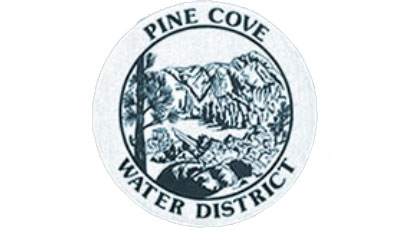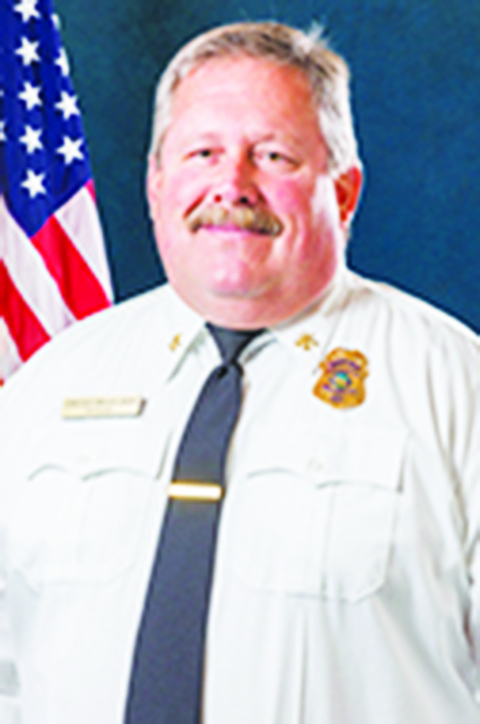Pine Cove water production is up
The water production in Pine Cove took a major jump last month. March production was 2.6 million gallons, which is 800,000 gallons (or 44 percent) more than the March 2016 volume of 1.8 million. Two years ago, in 2015, Pine Cove Water District’s production was 2.3 million gallons, which is the average March production since 2002.
The March production was also 700,000 gallons greater than the February volume of 1.9 million gallons. For the first quarter of 2017, production is nearly 900,000 gallons greater than the same period in 2016, but only 60,000 gallons more than the first three months of 2015.
The district has been proceeding with a program of repairing mainline leaks for several months. The success of this effort was demonstrated with the steady decrease in unaccounted-for water. In December, unaccounted-for water losses were 5.7 percent of total production and 10 percent for all of 2016. However, unaccounted-for loss rose to 13 percent for the first four months of 2017.
General Manager Jerry Holldber attributed the surprising increase in water consumption to a few leaks in the distribution system, as well as several private leaks. The private leaks were large volumes and over an extended period, he said.
“These were on the customer side of the meter,” he said. Referring to part-time residents, Holldber added, “The water was not shut off properly or sometimes not at all.”
Nevertheless, water sources continue to improve. Holldber reported that the groundwater level for well no 10, the static well, rose 7 feet in March, the largest increase in years.
“Signs of positive movement are starting to show in the majority of wells,” he told the board. “In April, we’ll see significant increases. I expect that well 10 may be up 40 to 50 feet over the summer season.”
After Gov. Jerry Brown rescinded the drought-emergency regulations, PCWD reverted to Stage 1 and plans to remain there, according to Holldber. May 2015 was the last month PCWD was in a Stage 1 status.
“This requires voluntary compliance as far as conservation,” Holldber told the board. “We’ll stay in Stage 1 with the support of our customers who believe there should always be an emphasis on conservation.”
At the end of three quarters of the current fiscal year 2016-17, both President Robert Hewitt and Holldber thought finances were in a good condition. Income has exceeded expenses by about $30,000 and should increase through the end of the fiscal year.
In April and May, Riverside County will disperse the remaining property tax revenue to special districts. PCWD expects to receive another $50,000 in tax revenue, which is about 60 percent of the tax revenue already distributed.
In March, PCWD sold a new water meter, according to Becky Smith, office manager. She said three more new meters may be bought this spring.
“Over the past few months, we’ve had several inquiries on various properties throughout Pine Cove,” Holldber said.
Staff also is exploring and evaluating the possibility of creating the option for online water-bill payments. “This is one of the most common requests we receive,” Holldber said. “We’ll look at the pros and cons, but it will take more than one or two months.”
In other business, the board approved a resolution requesting the Riverside County Registrar of Voters to conduct an election for the district in August. This is the fourth year of the terms for three directors — Louis Padula, Joel Palmer and Hewitt.
Vicki Jakubac, who was appointed in April 2016 to replace former Director Tim Lange, whose term started December 2015, will have to stand for election for the remaining two years of that term.
Holldber also distributed draft copies of the proposed revision to Ordinance 9, PCWD’s rules and regulations for water service. Hewitt told his colleagues that approval of the revised ordinance would be on the May agenda.
Some of the topics in the ordinance include the duties of the general manager, installation of services, responsibility for charges, water services per parcel, water conservation, backflow responsibility, meter installation and size, billing plans and conditions for discontinuance of service.
During the public-comment period, Bill Tell, president of Mile High Radio Club, delivered a letter to the district in response to a letter from Holldber to the club on March 31.
In that letter, which was a culmination of several exchanges over the past few years, Holldber wrote, “So on July 31, 2017, the cabinets will be gone and updated radios installed, or we will consider the license terminated.”
The communication facility is located at the PCWD Rocky Point site. The district built the facility to improve radio communication and for 20 years has not charged community groups any rent for its use. In order to improve the facility’s usefulness for all leasees, the district asked MHRC to upgrade and remove certain cabinets.
Tell made it clear that MHRC does not wish to move, but believes it does not have the funds to respond to the PCWD request to consolidate equipment. PCWD is trying to build a more efficient radio and communication site, especially with the addition of two recent customers — American Medical Response and a wireless internet provider.
Hewitt responded to Tell’s comments recommending that the board’s committee and MHRC set a meeting to resolve this issue.







